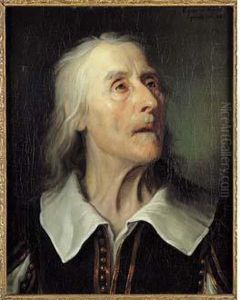Carlo Francesco Rusca Paintings
Carlo Francesco Rusca, also known as Carlo Francesco Rusk, was an Italian-Swiss portrait painter who was born in 1693 in Lugano, which at the time was part of the Swiss Canton of Ticino. Rusca’s early life and training are not thoroughly documented, but it is believed that he received his initial artistic instruction from his father, who was also a painter. Later, he likely continued his education in Milan, which was a significant artistic center in the region during that period.
Rusca’s career was primarily based in Turin, where he became an established portraitist, gaining the patronage of important personalities of his time, including members of the House of Savoy and other aristocratic families. He was adept at capturing the likeness and character of his sitters, often depicting them with a softness and sensitivity that was characteristic of the Baroque style of portraiture. His works typically included a refined use of light and shadow, a technique that enhanced the three-dimensionality and psychological depth of his portraits.
In addition to his work in Turin, Rusca’s reputation as a portraitist led to commissions from various European courts, indicating his recognition beyond regional boundaries. Despite the prominence of his career, Carlo Francesco Rusca remains a somewhat lesser-known figure in the pantheon of 18th-century European painters, with more renowned contemporaries often overshadowing him. Nevertheless, his contributions to the portrait genre are significant, particularly in the context of the cultural exchange between Northern Italy and the Swiss regions.
Carlo Francesco Rusca continued to work and maintain his reputation until his death in 1769. His legacy is preserved through his portraits, which continue to be admired for their elegance and clarity, providing a window into the faces and fashions of the European elite in the 18th century. Rusca's works are held in various collections and have been the subject of study for their stylistic qualities and historical value.
